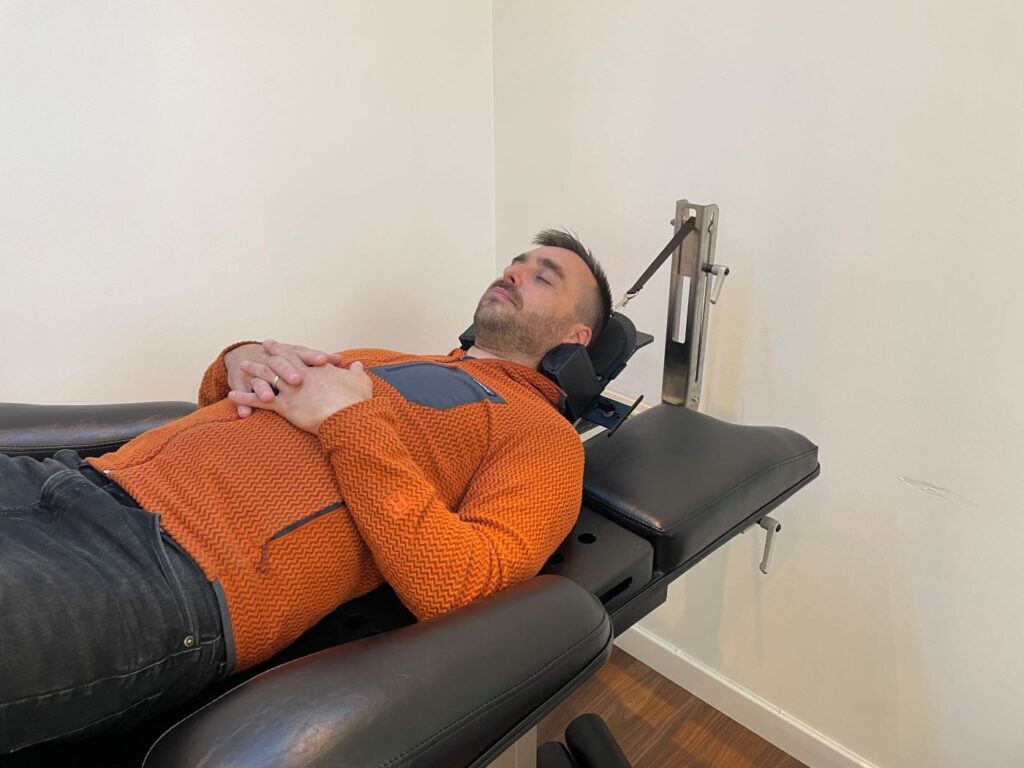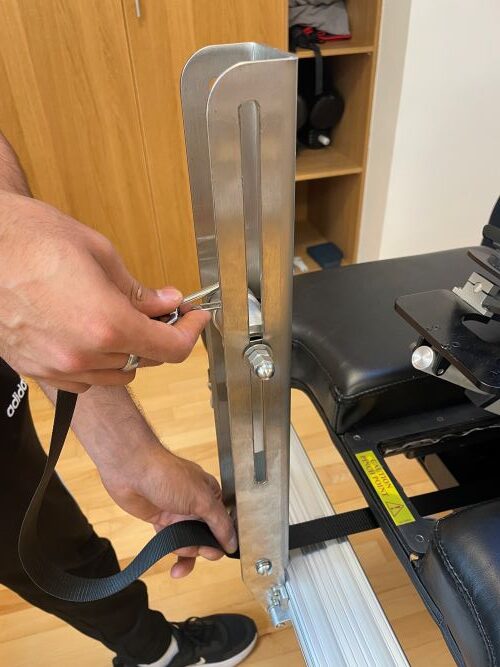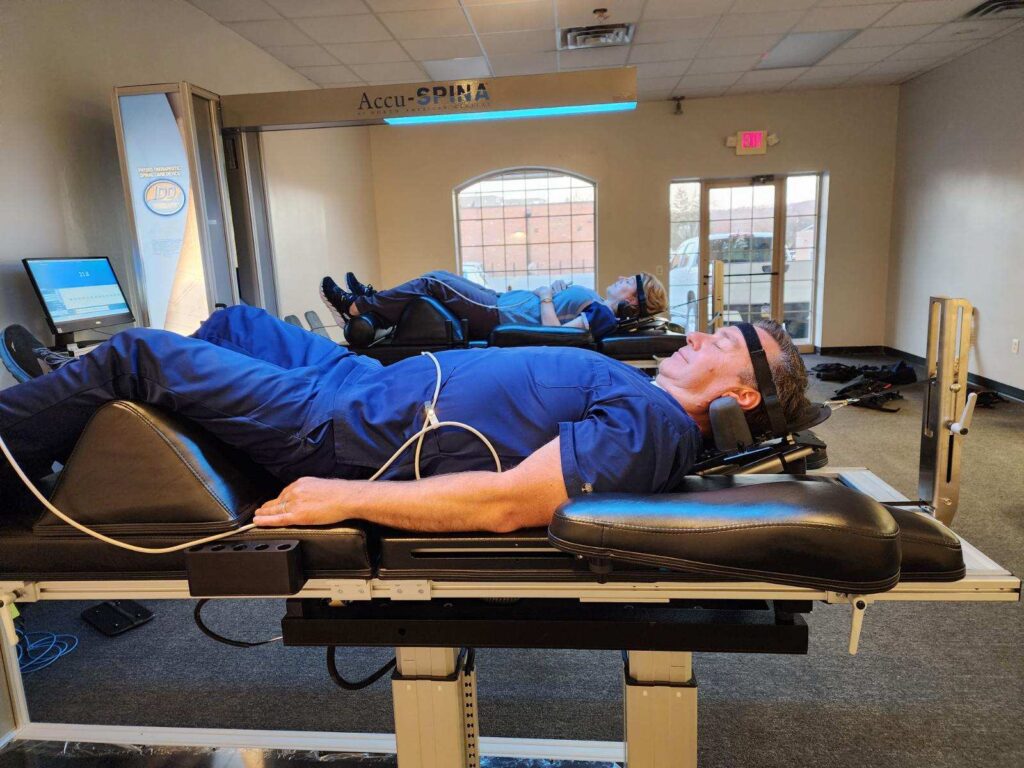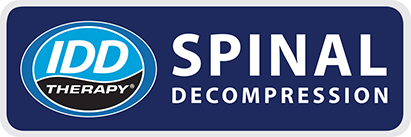Where is the most common cervical disc problem? C5C6 C6C7? In our experience these are the most common. This article explains how we treat cervical spine pathologies with IDD Therapy spinal decompression.
The Acc-SPINA uses specific angles set from 10 to 30 degrees to focus distraction forces to treat targeted levels in the cervical spine.

During a 25 or 25 minute treatment, there are 13 cycles where the targeted joint is distracted for a full minute at a pre-set high tension force, then relaxed for 30 seconds at a lower tension, (not zero force thus some tension is maintained on soft tissues), using computer-controlled pulling forces.
The patient is comfortably secured in a cervical unit and bolsters sit under the mastoid processes. The distraction force is longitudinal and the angle means that the force is focused at the desired level. The head may or may not be held in place with a head strap.

Maximum treatment force is 30lbs, but the most common treatment tension range is 18 to 24lbs. As the cervical vertebrae are small there is some action on neighbouring segments during the treatment. The goal being to decompress the disc, create pressure differentials, reduce pressure on nerves and work soft tissues to help restore function.
Many patients with neck pain or cervical radiculopathy struggle. They can move around but the pain and irritation can be debilitating. Within the IDD provider network, patients who were scheduled for cervical disc replacement surgery, have foregone the need for surgery.

Manual therapists use manual traction and generally patients like it. However for unresolved cervical disc problems, the short duration and unfocussed decompression are limiting factors. Manual traction of the neck is typically applied for 30 seconds on, 10 seconds off with no tension, repeated three or four times.
Thus the time under tension is perhaps two or three minutes at best, and at zero tension in between with no action on soft tissues.
The combination of benefits delivered by the Accu-SPINA are the difference that make the difference. For patients with bulging or herniated discs in the cervical spine, IDD Therapy spinal decompression is safe, targeted and effective. Patients often go to sleep.

Whilst back pain gets most headlines, any patient struggling with a cervical disc issue who doesn’t need emergency surgery, can first be considered for IDD Therapy.
I will add that my late father had IDD Therapy on his lumbar spine. Severe spinal stenosis in his neck meant he was losing balance and had fallen, he underwent decompression surgery.

But the risks of surgery for cervical disc problems are real, and if we avoid the need for surgery, it is hugely cost-efficient and in the best interests of the patient.
For details about providing IDD Therapy spinal decompression at your clinic, go to.
UK & Int’l: Click Here
USA: Click Here


